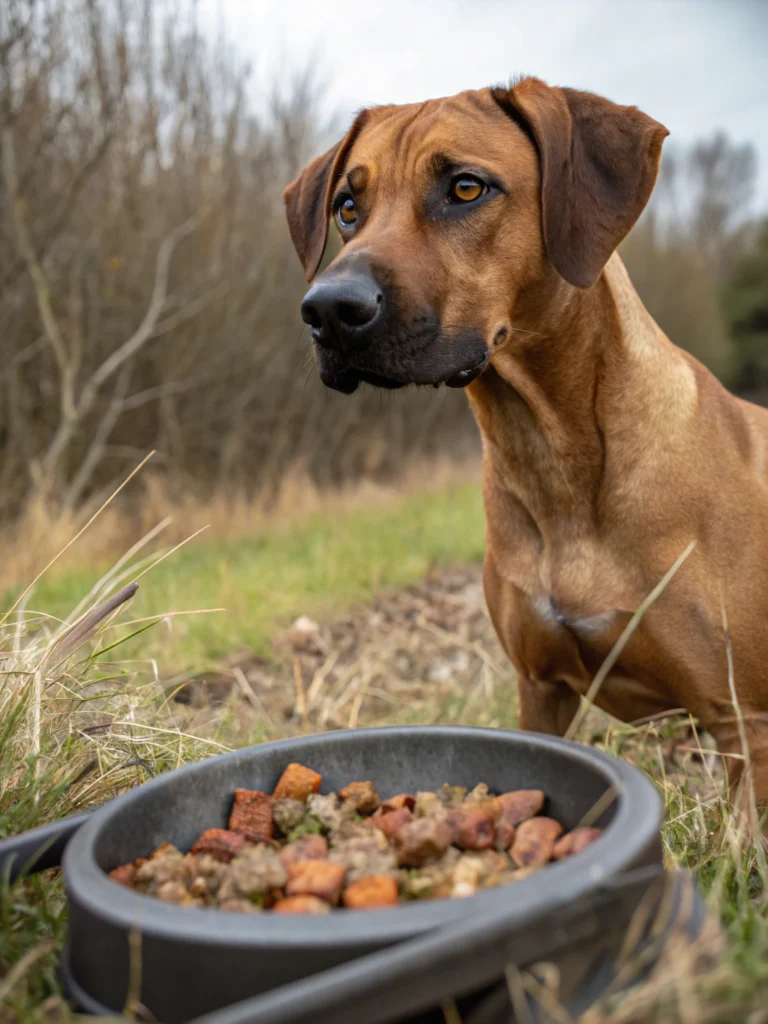.
Understanding the Ridgeback Dog Hunting Instinct: What You Need to Know
Introduction
Did you know that the ridgeback dog hunting instinct is so deeply ingrained that these dogs were originally bred to track and corner lions? That’s right—the Rhodesian Ridgeback, a breed known for its courage and athleticism, has a powerful Rhodesian Ridgeback prey drive that can surprise even experienced dog owners.
If you’re a Ridgeback owner or considering adopting one, understanding this instinct is crucial for responsible pet parenting. In this guide, we’ll explore the origins of their hunting behavior, how to manage it, and ways to channel their energy positively.
The Origins of the Ridgeback’s Hunting Instinct
The Rhodesian Ridgeback was developed in Southern Africa to assist big-game hunters. Their primary role? To track, corner, and hold large predators like lions until hunters arrived. This required:
- Fearlessness – Ridgebacks had to face dangerous animals without backing down.
- Speed & Stamina – They needed endurance to keep up with fast-moving prey.
- Intelligence – They had to think independently while working in packs.
Today, while they’re no longer hunting lions, their instincts remain strong. Recognizing this helps owners provide appropriate training and stimulation.
How to Manage Your Ridgeback’s Prey Drive
1. Early Socialization & Training (H3)
Start training early to reinforce impulse control. Socialize your Ridgeback with other animals to reduce aggressive chasing behaviors.
Pro Tip: Use positive reinforcement—reward calm behavior around smaller pets.
2. Provide Structured Exercise (H3)
A bored Ridgeback is a destructive Ridgeback. Engage their instincts with:
- Long walks or runs (at least 60-90 minutes daily)
- Interactive toys (puzzle feeders, flirt poles)
- Obedience training (reinforces discipline)
3. Channel Their Instincts Productively (H3)
Instead of suppressing their drive, redirect it:
- Scent work games (hide treats for tracking practice)
- Lure coursing (simulates chasing prey in a controlled setting)
- Agility training (burns energy while improving focus)
Common Mistakes to Avoid
❌ Ignoring Exercise Needs – A sedentary Ridgeback may develop anxiety or destructive habits.
❌ Punishing Natural Behaviors – Scolding for chasing can create confusion; redirect instead.
❌ Off-Leash in Unsecured Areas – Their strong prey drive can lead to bolting after squirrels or cats.
Storing Tips for a Well-Balanced Ridgeback
Just like a good recipe, maintaining a Ridgeback’s well-being requires proper “storage” (routine care):
✔ Consistent training sessions (short, daily drills work best)
✔ Mental stimulation (rotate toys to prevent boredom)
✔ Secure fencing (prevents escape attempts when prey is spotted)
Conclusion
Understanding and managing your Ridgeback’s hunting instincts ensures a happy, well-adjusted companion. By providing structured exercise, training, and mental challenges, you can embrace their natural drive responsibly.
Ready to put these tips into action? Share your Ridgeback’s progress in the comments or explore more breed-specific guides!
FAQs
Q: Can Ridgebacks live with small pets?
A: With early socialization, some can coexist peacefully—but supervision is crucial.
Q: Are Ridgebacks aggressive?
A: Not inherently, but their high prey drive requires proper training to prevent unwanted chasing.
Q: How much exercise do they really need?
A: At least 1-2 hours of vigorous activity daily to stay balanced.
By following these guidelines, you’ll foster a harmonious relationship with your Ridgeback while honoring their incredible heritage. 🐾



